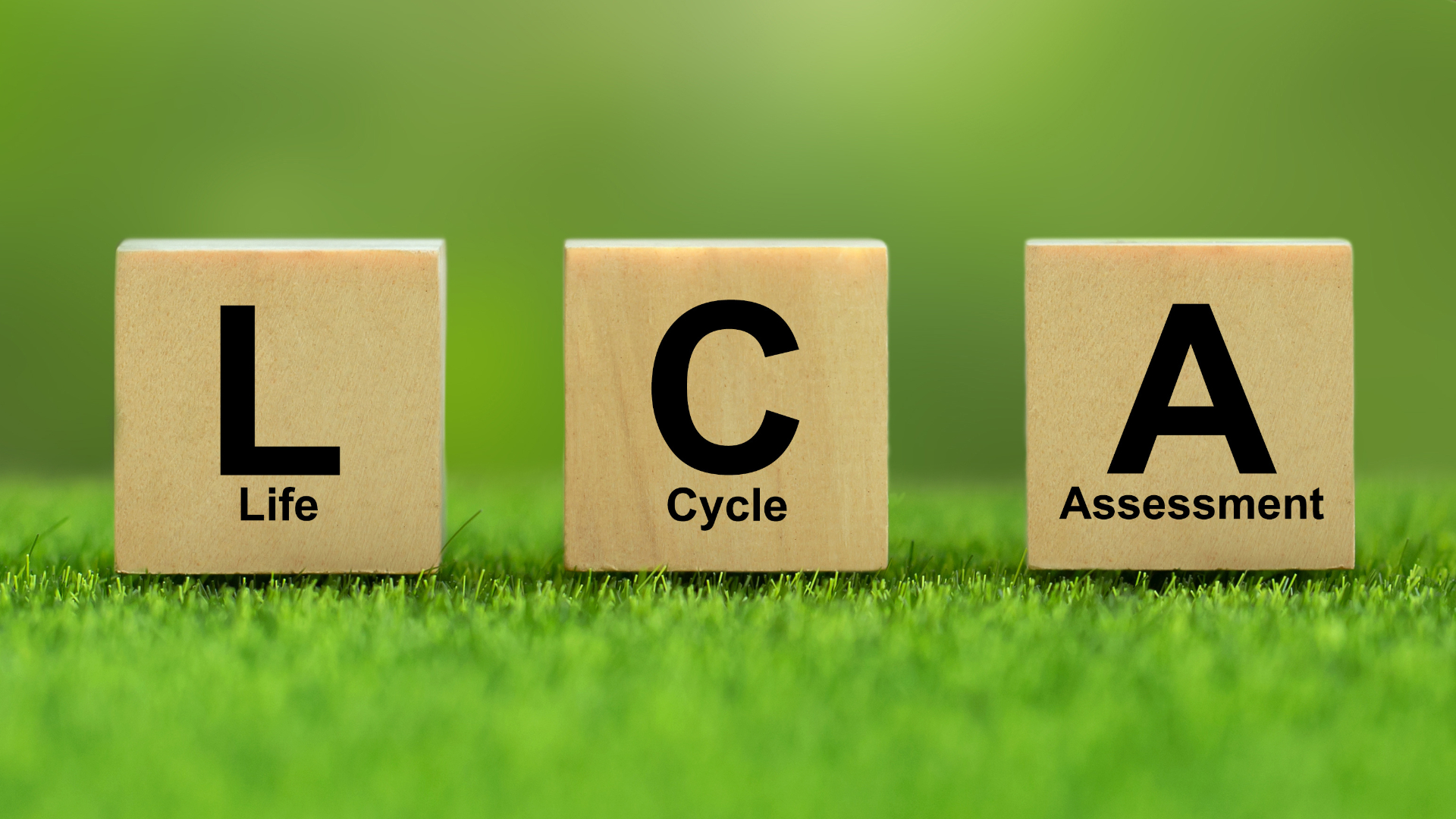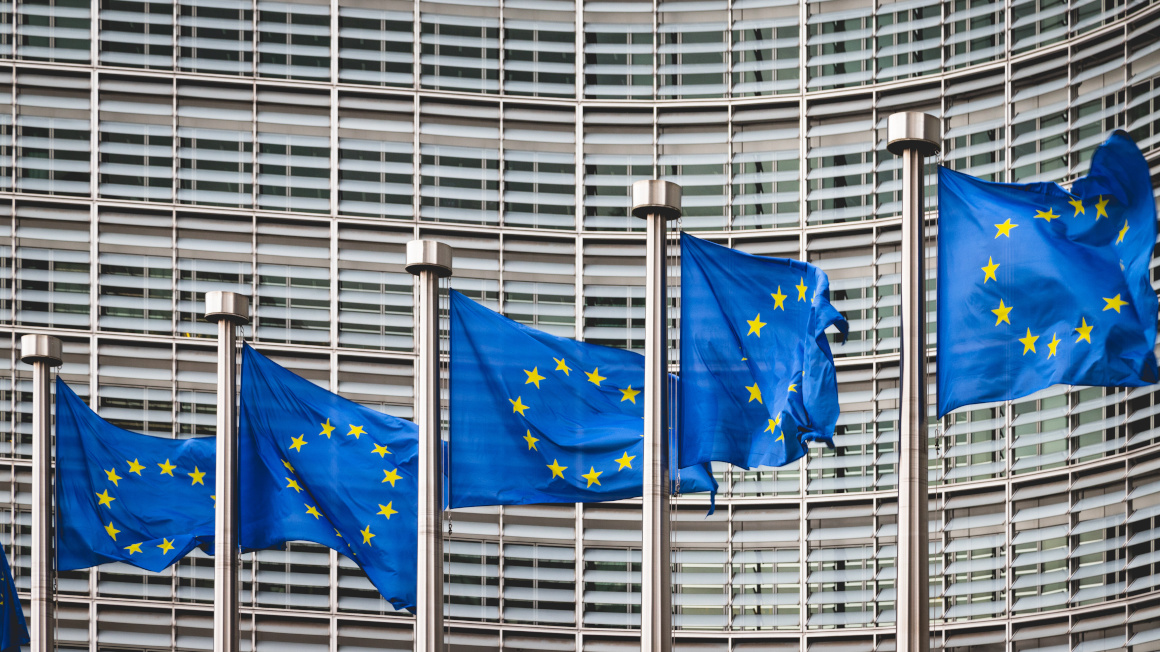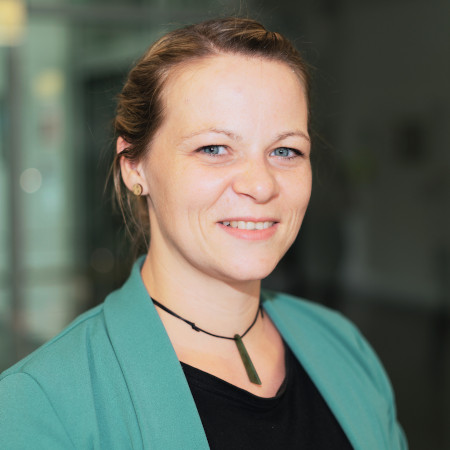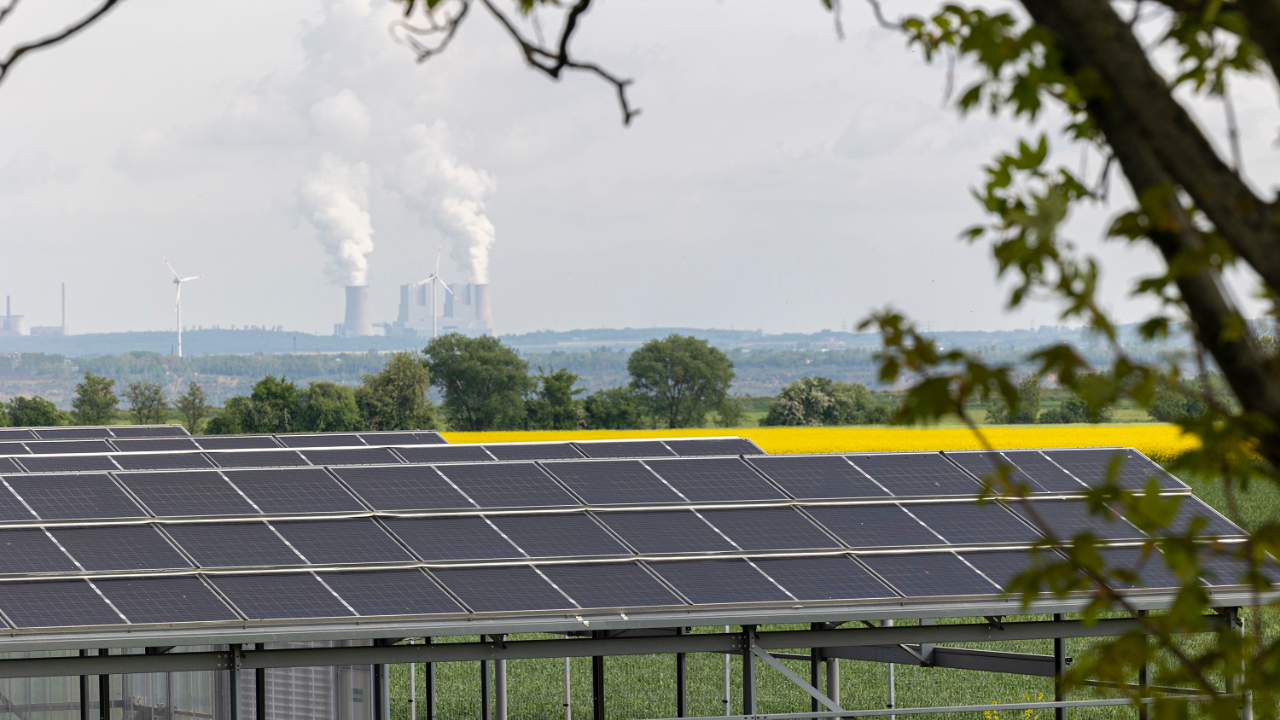
The structural change in the Rhenish mining district is in full swing. In areas where lignite is still being mined today, a model region for sustainable and bio-based economic activities is emerging. In another thematic dossier on bioökonomie.de, the major research consortia of the bioeconomy model region in the Rhenish mining district are introduced in detail (see also the information boxes).
However, the transition to a bioeconomy region cannot be achieved through research alone. The transformation is a multifaceted and long-term process, for which future-proof and economically viable concepts, as well as the collaboration of all stakeholders from politics, industry, science, and civil society, are of central importance.
This is where the collaborative project "Bioeconomy – Understanding. Connecting. Supporting (Bioökonomie-VVU)" comes in. In this accompanying research project, researchers aim to investigate the conditions necessary for the successful implementation of the structural change in the Rhenish mining district.
The project includes both the accompanying research by a consortium of scientific institutes from RWTH Aachen and TU Dortmund, as well as a secretariat jointly operated by the Institute for Technology and Innovation Management (TIM) at RWTH Aachen and the Institute for Plant Sciences (IBG-2) at the Forschungszentrum Jülich. The five-year project is funded by the Federal Ministry of Education and Research with a total of €6.3 million until 2026.
Professional support for flagship projects
At the heart of the project is the professional support of the two flagship projects of the bioeconomy model region in the Rhenish mining district: the Bio4MatPro Competence Centre and the BioökonomieREVIER Innovation Cluster. “We see ourselves as a kind of meta-project, looking at what is needed on the way to this bioeconomy model region,” says Christina Dienhart from the Institute for Technology and Innovation Management (TIM) at RWTH Aachen. “Here, we work with all the stakeholders in the region, but primarily with the major flagship projects, Bio4MatPro and BioökonomieREVIER. We want to support these projects in the structural change process to shape a bio-region in the Rhenish mining district.” According to Dienhart, the goal is not to “micromanage” the flagship projects, but rather to systematize and make use of insights and experiences from the model region.
Bio4MatPro
At the Bio4MatPro Competence Centre, 50 partners from industry and science are currently working together on 23 R&D projects to explore and drive forward the biological transformation of industries such as textiles, chemicals, medical technology, and consumer goods, as well as the field of lightweight construction, through a biological transformation of materials science and production technology. Eight of the 23 R&D projects are industry-led.
More information is available on the project website.
BioökonomieREVIER
The innovation cluster "BioökonomieREVIER" is developing promising research approaches that contribute in various ways to the transformation of the region from a fossil-based to a bio-based economy in industry and agriculture. Research is being carried out in a total of 14 innovation labs across three areas of focus, based on the region's economic strengths: agriculture, biotechnology and plastics industry, as well as integrated biorefinery.
More information is available on the project website.
Supporting knowledge transfer
In addition, a secretariat has been established as part of the project to support the transfer of knowledge from accompanying research into bioeconomic practice—through events, publications, workshops, delegations, and company and trade fair visits. The primary focus of the transfer is on existing and new stakeholders, the regional society, as well as interregional networking.
"The secretariat's role is to link the research activities in the flagships and accompanying research with the stakeholders and their challenges in the region, and to communicate the progress and opportunities of individual technological innovations for industry and agriculture, as well as bioeconomy for societal transformation, to the target groups," explains Christian Klar from IGB at Forschungszentrum Jülich, who is responsible for the secretariat.
According to Klar, the Rhenish mining district offers great potential for bioeconomy because it can draw on an "intensively developed network of actors." "The business landscape in the Rhenish mining district, including food, chemicals, paper, textiles, biotech, combined with agriculture and science, provides an excellent starting point. The goal of our work is to better connect especially SMEs with the innovation potential in regional science," says Klar. Through networking and transfer, it is ensured that the Rhenish mining district benefits from research results, by "developing solutions for real problems and challenges in the structural change region."
The TIM team led by Christina Dienhart focuses on the economic aspects needed for the practical success of bioeconomy in the structural transformation. These include, for example, the development of business models, analysis of bioeconomic technologies, and investigation of regional networks. Through interviews, surveys, and events, the TIM team also explores which actors in the region are "active in the broadest sense" in bioeconomy and whether and how they are connected. For the scientific part of the accompanying research, in addition to TIM, four other institutes from RWTH Aachen and TU Dortmund are responsible.
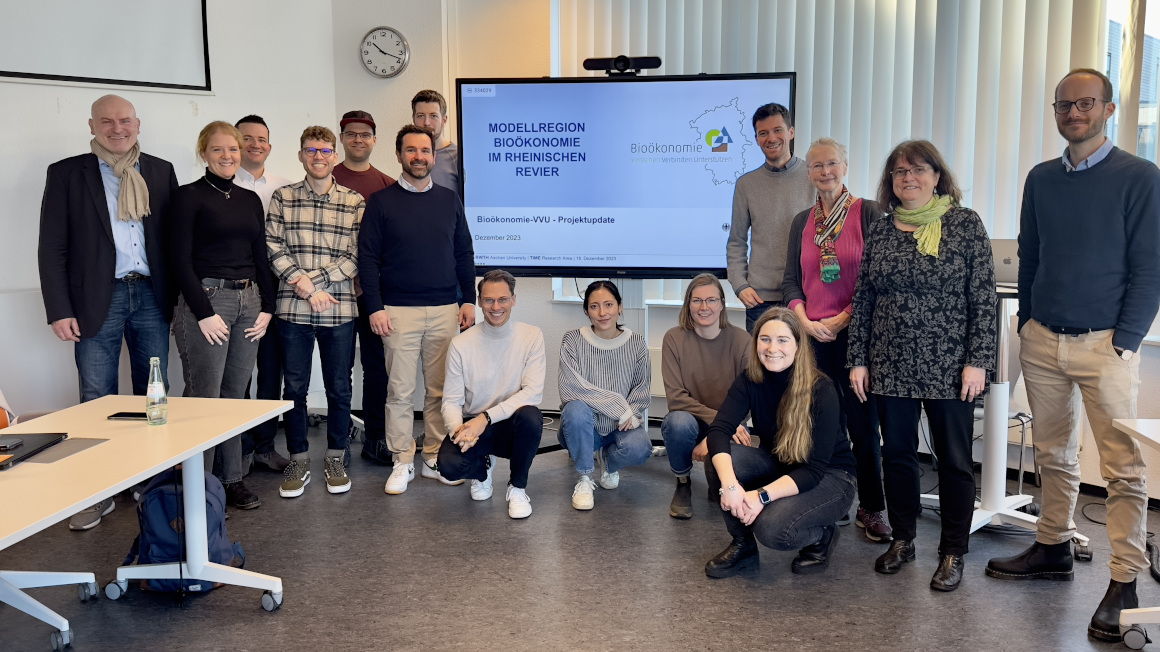
Focus on start-ups
Researchers from TU Dortmund are specifically focusing on the founding and settlement activities of companies and start-ups in the bioeconomy, both in the Rhineland region and beyond. "Our goal is to understand what motivates companies and start-ups to establish and settle in the Rhineland, in order to make the model region an attractive and innovative location for bioeconomy," says Steffen Strese, who leads the project at TU Dortmund. "The current founding numbers show a continuous positive development of bioeconomy start-ups in the Rhineland, with most still being in a very early stage of development. Furthermore, it has become apparent that a large part of the start-ups are university spin-offs or spin-offs from existing companies and research institutions," reports Strese.
But what has changed since the project started in 2022? The status conference has established an annual platform where all stakeholders from the Rhineland region exchange views on selected topics such as land use, stakeholder engagement, and start-up culture. At the same time, the event offers the accompanying research an opportunity to present its findings publicly.
Status conference brings stakeholders together
"With the status conference, we bring together a variety of stakeholders. It is a public event, to which the two flagships invite their contacts, as well as representatives from companies, start-ups, and politics. We use the status conference to present our topics and thus provide a stimulus for discussion," explains Dienhart.
During the status conference, the annual innovation report of the accompanying research is also published. It provides an insight into the current development of the bioeconomy model region in the Rhineland and contains brief contributions from the accompanying research. "In addition, we have launched a white paper series titled ‘Blickpunkt Bioökonomie’ (spotlight on bioeconomy) in which we translate our scientific findings into practical reports."
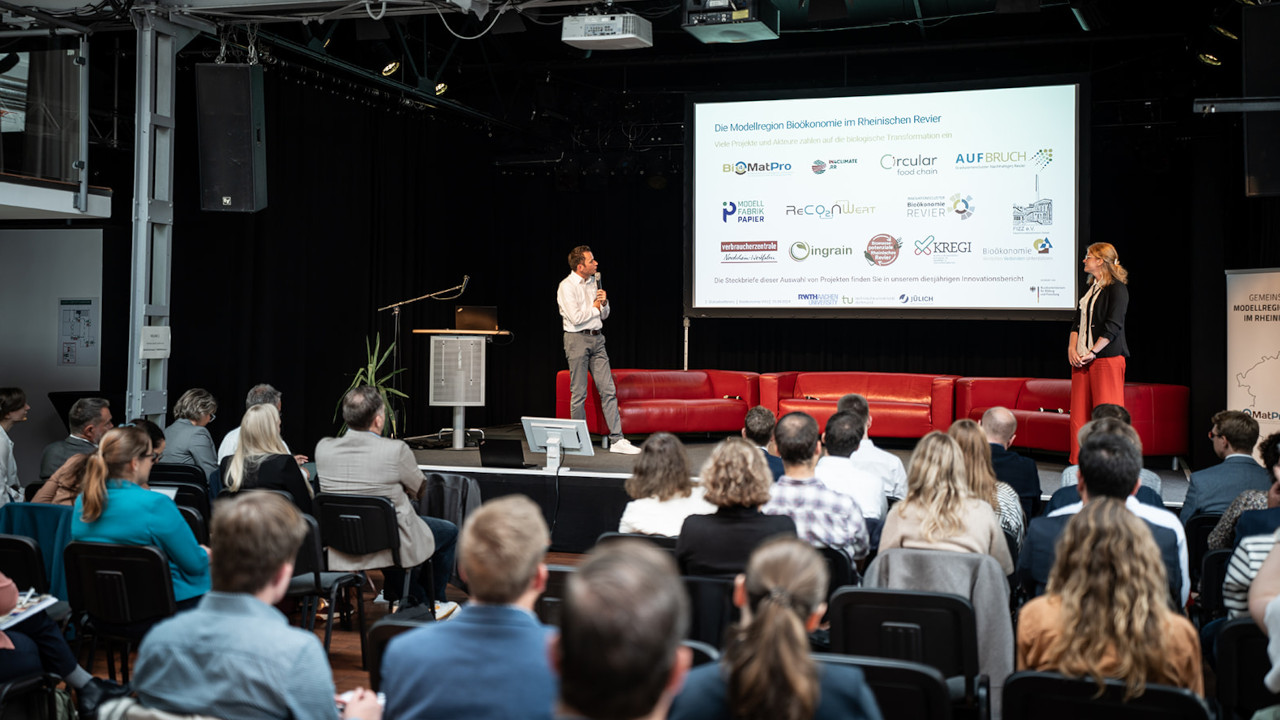
In addition, the TIM team has developed recommendations for action for practical bioeconomy in the region: "We have identified various strategy development patterns that show how regional innovation projects can develop and implement a shared strategy," says the researcher. "Once you know which pattern a project or consortium fits into, you also know how to best support it, as we understand the challenges and success factors."
As an example, Dienhart mentions projects in which ideas are developed in a very grassroots democratic way. "These projects have the advantage of being supported and developed by all stakeholders together. However, they also have the disadvantage that it can sometimes take longer to achieve initial results. With our analyses, we can provide policymakers with recommendations on how to best support such projects, unlock their potential, and identify weaknesses as early as possible," explains Dienhart.
According to Dienhart, the concept of the bioeconomy model region has also been incorporated into the curriculum at RWTH Aachen. Here, students are involved in concrete projects, raising awareness of the topic. Inspiring doctoral candidates through interdisciplinary training to start their own ventures and thus actively shape the transformation in the Rhineland region is also the goal of the AUFBRUCH graduate cluster, which is funded by the BMBF and in which the three partners from the accompanying research project are also involved.
Graduate Cluster AUFBRUCH
AUFBRUCH is funded by the German Federal Ministry of Education and Research (BMBF) with €12.5 million as part of the structural transformation of the Rhineland region. The graduate cluster unites eight partners in and around the Rhineland: It brings together partners from universities, three universities of applied sciences, a research institution, and an innovation network, thus combining expertise in biotechnology, chemistry, process engineering, logistics, economics, social sciences, and spatial planning to significantly drive the transformation of the Rhineland into a sustainable regional bioeconomy.
More information can be found on the project website.
Start-ups benefit from strong regional networking
In addition, a competence map was created during the course of the project, showing which companies are active in which areas within the Rhineland region. TU Dortmund also publishes the so-called Bioeconomy Start-up Pulse annually. "This report aims to highlight the unique features of bioeconomy start-ups and their significance for structural transformation, as well as to identify the challenges and opportunities these start-ups face," explains Steffen Strese. One of the biggest challenges for bioeconomy start-ups is financing, according to Strese. "However, start-ups in the Rhineland region also benefit from strong networking in the region when acquiring financial capital."
Strengthening technology transfer to the economy
As part of a so-called Delphi study, researchers at RWTH Aachen are currently investigating what the future of the Rhineland region might look like with regard to a bio-based economy. Initial results are already available: While the Rhineland region offers good conditions for the bioeconomic transformation, particularly with the two flagship projects and the WIR! alliance Ingrain, "the technology transfer into applications in the regional economy needs to be significantly strengthened," says Dienhart. "This requires more application-oriented research projects, closer cooperation with small and medium-sized enterprises, better funding, and also regulatory adjustments." Support for start-ups in the region should also be improved. According to Dienhart, this not only concerns financing but also the creation of laboratory space.
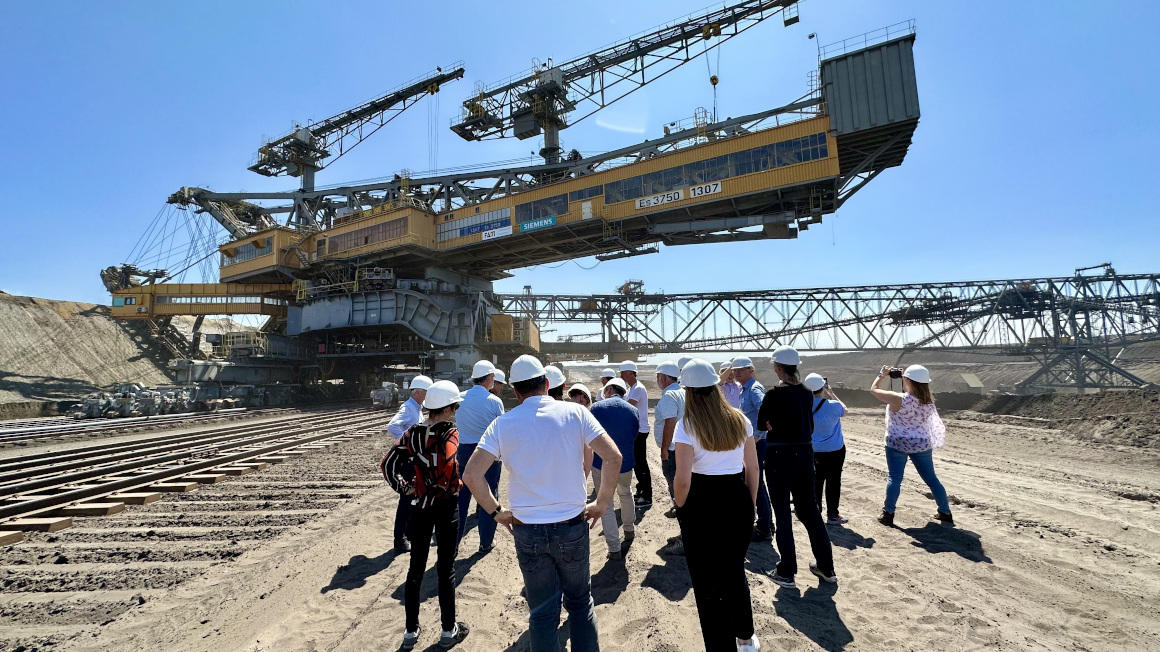
„Bioökonomie – Verstehen. Verbinden. Unterstützen“
Involving the public
Initial findings from the collaborative project Bioeconomy-VVU show: "The structural transformation can only succeed if it is made from the region for the region, involves all stakeholders, and includes the public," summarizes Dienhart. Currently, the coal phase-out is being communicated in an extremely negative way because there is uncertainty about how it can succeed. "By presenting a better picture, we need to create a sense of optimism," says Dienhart.
Author: Beatrix Boldt
